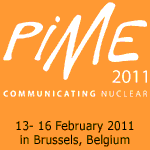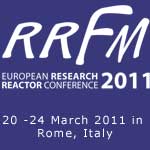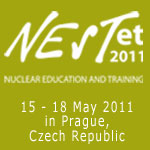
Austria’s Contribution to EU Nuclear Education and Training
By H. Böck, R. Khan, M. Villa, G. Steinhauser, Vienna University of Technology/Atominstitute
Nuclear education is the process of acquiring the knowledge and expertise needed to make use of the various applications of nuclear technology, whereas nuclear knowledge is the accumulation of the facts that you receive from a good education and training. Universities and advanced technical colleges are the only institutions capable of providing this kind of education. Unfortunately, for more than a decade now there has been a worldwide decline in the number of academic programmes offering an education in nuclear sciences. To address this erosion of nuclear knowledge, the Vienna University of Technology/Atominstitute (VUT/ATI) contributes to European and international efforts that are being made to reduce genuine concerns about the future of nuclear education. This paper highlights the nuclear Education and Training (E&T) activities of the VUT/ATI at a national, European and global level. The main goal of the VUT/ATI’s nuclear E&T programmes is to keep nuclear education alive - especially in view of the prevailing anti-nuclear political environment in Austria.
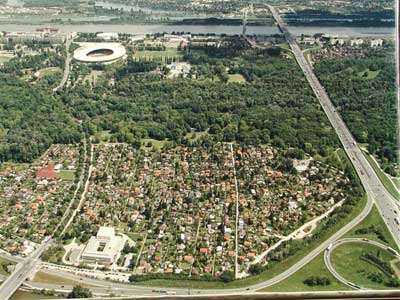
To provide high quality nuclear E&T to students/trainees in a timely and cost-effective manner, in partnership with other EU universities and research institutes, the VUT/ATI is actively involved in many regional and international nuclear E&T activities through the European Nuclear Education Network (ENEN) and the International Atomic Energy Agency (IAEA).
Introduction
The applications of nuclear technology are based on the nuclear knowledge acquired from E&T activities. The uninterrupted transfer of nuclear knowledge from one generation to the next is a key component for knowledge sustainability when it comes to nuclear technology. Since the early nineties, a severe shortage of qualified nuclear manpower has affected many countries, especially industrialised countries. This has mainly been due to the retirement of workers and the lack of adequate replacements resulting from a negative public perception of nuclear technology and a lack of interest from the young people in pursuing a nuclear career [1]. Europe has been hit by this serious situation, even in those member countries that have a strong nuclear power programme. In response, Europe has taken a wide range of measures to combat this situation, including the development of a nuclear education networks (including ENEN, an active promoter of nuclear education) and E&T programmes at universities and research institutes. These programmes aim to provide students and professors with exchange programmes and to improve the level of public awareness in favor of nuclear at both a local and European level.
To further maintain and improve the level of skilled nuclear manpower an enhancement of E&T activities in the nuclear field is urgently required. This will ensure the safe and efficient development of nuclear technology [2].
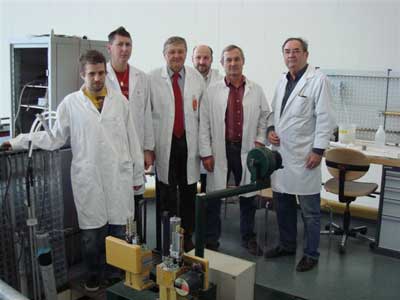
For an optimal application of nuclear technologies, specialised human resources are needed. The most crucial requirement here is for sufficient graduates and highly-qualified personnel, because these are the people who are needed to operate existing facilities, ensure capacity building and carry out innovative research and development (R&D). This manpower demand is primarily met by universities and training institutes. They play a key role in maintaining and transferring nuclear knowledge from one generation to the next generation through their E&T activities [3]. The E&T processes look similar but they are in fact different facets of learning, and their history, purpose, and methodology are clearly different. This paper focuses on the main differences, especially between education and training. It also shows examples of programmes offered by the VUT/ATI.
Education is broader than just training because it focuses on what is required to maintain a broad range and continuity of competences across the generations. It is essentially a knowledge-driven process, involving academic institutions as suppliers and students as customers. Training, on the other hand, is learning a particular skill needed to deliver a particular result. Training courses follow different processes to those of regular academic education. Training is essentially an application-driven process, involving industrial training organisations as suppliers and professionals as customers [3].
An essential component in ensuring a high level of expertise to satisfy current and future demand is a sustainable education and training infrastructure. Educational systems provide the young generation with the initial curricula. It is knowledge-based and generally provided by academia. Complementary to that education is the uninterrupted maintenance of the level of skills and competence. Training activities must be provided to young and junior professionals working in all nuclear disciplines.
Normally, students join the training institute directly after graduation. The academic degree provides them with a certain theoretical background in a given subject, such as physics, mathematics and computer sciences. This knowledge is a prerequisite for training. The academic programme provides, therefore, the necessary input for training institutions to offer training in a specific subject.
Particularly at a higher education level, training at academic institutions may not be adequate for a specific subject. Therefore, training institutes are needed to provide adequate instruction in those specific subjects. It is common practice worldwide that educational and training institutions work separately but in close cooperation. The cooperation between education and training bodies is both carried out and recognised at an international level. This has led to the development of national and international networks that have existed now for about a decade. For example, ENEN was created as a result of co-operation between European universities involved in nuclear education and research, nuclear research centers and the nuclear industry [4].
1. E&T activities at national level
Austria has a strong anti-nuclear policy. It is very difficult to keep nuclear knowledge alive in this country because of political factors. Nevertheless, the VUT/ATI is involved in many E&T activities at a national level. There is no Austrian university or institute offering a nuclear engineering degree, but there are some pure nuclear science subjects (i.e. courses in nuclear engineering, reactor physics, reactor experiments, dosimetry and radiation protection etc.) that are offered on the VUT Technical Physics curricula at a BSc and MSc level [5].
1.1. ATI E&T infrastructure
The Federal Ministry for Science and Education supports and regulates the educational institutions (i.e. universities, R&D organisations etc.) in Austria. Universities, through their faculties and institutes, provide an objective-oriented education. VUT (VUT www.tuwien.ac.at) is composed of eight faculties. Each faculty administrates different departments. The departments of physics includes the Institute of Applied Physics , the Institute of Theoretical Physics , the Institute of Solid State Physics and the Institute of Atomic and Subatomic Physics (formerly the Atominstitute).
This paper focuses on the nuclear E&T activities of the ATI. The experimental nuclear facilities available at the institute are briefly described below [5].
1.1.1 TRIGA Mark II research reactor
The ATI (www.ati.ac.at) has been operating the 250 kW TRIGA Mark II research reactor since March 1962. This reactor is the only operational research reactor in Austria. It is equipped with a thermal column, a radiographic collimator, four beam tubes and three in-core pneumatic transfer systems. Three of these beam tubes (A, B, and C) are radial beam tubes, while the fourth one is a tangential beam. Inside the core there are about 16 irradiation positions for irradiation experiments. Outside the core the four beam tubes supply the neutron. These facilities are used in the fields of:
-
Research and training in nuclear science
-
Radio-isotope production for in-house research
-
Neutron scattering experiments to study neutron and solid-state physics
-
Neutron radiography/tomography and
-
Neutron activation analysis
The first two research areas (1 and 2) use several irradiation facilities located inside or next to the reactor core. The other three areas (3, 4 and 5) use facilities positioned outside the reactor core.
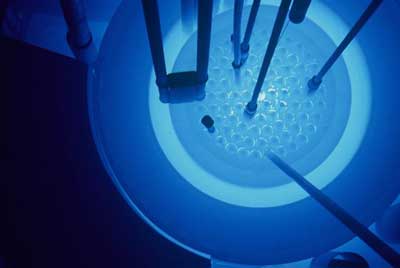
The scope of this paper is limited only to the nuclear E&T activities of the ATI at national, European and international level, using the above-mentioned experimental facilities. The different research groups working at the Institute and using the TRIGA reactor are engaged in the following research areas [5]:
-
Nuclear technology, EDV and electronics
-
Neutron and solid state physics
-
Radiochemistry
-
Radiation protection and dosimetry
-
Low temperature physics and superconductivity
1.1.2 Routine experiments carried at ATI
This section describes practical reactor physics and reactor kinetics experiments, as well as I&C experiments, which are offered by the ATI at the TRIGA Mark II reactor. These experiments are very general and can be applied to other research reactor types with some modifications [6]. The theoretical and practical details of each experiment are described very briefly below:
-
Thermal neutron flux measurement: Thin cadmium (Cd) covered and bare gold (Au) foils are irradiated in the radial and axial positions in the TRIGA reactor core at 10W. From the Cd-difference measurement, the radial and axial neutron flux distribution is determined.
-
Influence of the void coefficient on reactor power: At a reactor power level of 10W, a small container with different air volumes is pulled axially through the reactor core while the reactor is in automatic operation mode. The reactivity effect of volume and position in the core is determined.
-
Critical experiment: Several fuel elements are removed from the reactor core and sequentially re-loaded back into the core. The neutron count rate is measured after each step of re-loading. At each step, the measurements are performed with all control rods up and then down. Criticality is reached with all control rods up after reloading of five fuel elements.
-
Control rod calibration: One control rod is calibrated by removing it in steps from the critical core to measure the resulting reactor period. Using the in-hour equation the respective reactivity value is determined.
-
Verification of the radiation level during reactor operation: Using various radiation detectors the radiation field in different reactor areas is verified.
-
Control rod calibration in the subcritical range: The safety rod is calibrated in the subcritical range by cross-calibration, using the reactivity data of the regulating rod. In this case the safety rod is removed in small steps from the lowest possible position and the count rate increase is measured with a fission chamber.
-
Reactivity values of fuel elements in different core positions: Keeping the reactor in automatic control with 10W, a fuel element is removed consecutively from each of the five ring positions. The loss of reactivity is compensated for by the movement of one control rod in automatic mode. From the difference of the rod position and the rod calibration curve the reactivity values of the fuel elements in different core positions are determined.
-
Reactor power calibration and temperature coefficient of reactivity: At a reactor power of 10 W, the rod positions and the water and fuel temperature are noted. Then the reactor power is raised to 100 kW and again the same values are recorded. From the difference in the rod positions and the fuel temperature increase the fuel temperature coefficient can be determined. Then reactor is operated for only 90 minutes, with convection cooling, and the increase in water temperature is monitored. Comparing the temperature increase with the value from a previous thermal power calibration, the thermal reactor power is determined.
-
Demonstration of a prompt critical power excursion: Due to the strong negative temperature coefficient of reactivity, the TRIGA reactors allow prompt critical excursion to 1000 times the normal power without any damage to the core. This is demonstrated using a pneumatic rod, which is removed promptly from the critical core. Typical power levels of 250 to 300 MW are reached for a period of about 40 minutes.
-
Introduction to typical research reactor instrumentation: An introduction to the instrumentation of the TRIGA Mark II reactor is provided. At the end, participants are able to start up the reactor to reach various power levels.
-
Calibration of the nuclear channels: The nuclear and temperature channels are calibrated according to given procedures. The alarm and scram settings are verified.
-
Measurement of control rod drop times: The three control rod drop times are checked according to given procedures. The individual rod drop time is measured from different rod positions.
-
Experiments with a Compensated Ionisation Chamber (CIC): The CIC is used to determine the optimal compensation voltage and to measure the A-V characteristics at different power levels.
-
Experiments with a fission chamber: A fission chamber is used to set the discriminator between gamma and neutron signals and to determine the range of neutrons outside the core.
-
Self-powered neutron detectors: A self-powered neutron detector is exposed in the core centre and it´s activation and decay is monitored. This enables one to determining the type of emitter material.
-
NPP Simulator Program (PWR): Using an IAEA simulator programme for PWR type reactors, a cold start-up is carried out and followed by power changes and selected incident simulation.
-
Safeguards mock-up inspection: With this exercise students are instructed how the IAEA and/or EURATOM regularly control the fissile material in nuclear facilities. In the theoretical part, the registering of fissile material, movements from or to the facility, types of codes etc. are all explained. During the practical part, various types of fissile material such as fuel elements, fission chambers, low and medium-enriched uranium samples are identified and demonstrated using available detectors.
-
Demonstration fuel handling: One fuel element is removed from the core and placed under water in the 1.5 ton fuel transfer lead container. Then the container is removed from the reactor tank and the radiation levels are checked at the container’s surface.
-
Gamma spectrometry with various fuel samples: Gamma spectrometry is one of the common methods used for irradiated fuel inspection. By measuring the fission monitoring isotopes (cesium, zirconium etc.) one can correlate the amount (or activity) of these isotopes with their respective burn-up values. Due to a direct proportional relation between the cesium ratio (Cs134/Cs137) and burn-up value, the gamma spectroscopy of the spent fuel is very useful for long irradiation periods. This experiment demonstrates the measurement of cesium isotopes (Cs134, Cs137). The ATI has developed a special fuel scanning device that has the ability to scan each millimeter of irradiated fuel accurately in axial direction.
1.2 ATI’s nuclear E&T activities at secondary level
Beyond secondary school education level, it is very important to attract the young generation to acquire basic nuclear knowledge that may later lead them to pursue higher-level nuclear education. Although this is a long-term target it would improve the process of nuclear education for the following reasons:
-
It is easier to attract young people to higher-level nuclear education when they have already some fundamental nuclear knowledge. This is only possible if they receive such knowledge at secondary school level.
-
Most students decide their future career when they finish their secondary education. The basic know-how of nuclear technology can help them to select this direction for their future and increase their interest.
-
It would also benefit national and international decision-makers (e.g. politicians, economists, journalists etc.) if they were to have some basic knowledge of nuclear technology
Due to these factors, in addition to its regular academic programmes, the ATI has recently designed a new programme for secondary school pupils to follow just before obtaining their final school certificate, prior to commencing university studies (17 to 18 years of age). In co-operation with a dedicated physics teacher, two one-day courses were organised in December 2010 to attract future university students to study nuclear physics. As about 24 pupils applied for each class they were divided into 3 equal groups. After an introduction to the research areas covered by the ATI, Group 1 was introduced to the TRIGA reactor. Each student was shown how to start the TRIGA reactor under professional supervision. Meanwhile, Group 2 was introduced to alpha, beta and gamma radiation and shown how to identify unknown radiation sources. Group 3 visited ATI’s laboratories, including those dedicated to quantum optics, low temperature physics and radiochemistry. Each group was guided by a trained professional and two students. Throughout the day the groups rotated, so that every pupil enjoyed the full programme. The final discussions and the subsequently very positive course evaluation concluded that the course does heighten the interest of future students in studying nuclear science. It proved to be a great success. The course will be repeated in the future.
1.3 ATI’s nuclear E&T activities at University level
ATI’s university-level E&T courses mainly involve academic qualification (BS, Master and PhD) programmes and some training modules. No university in Austria offers a pure nuclear engineering degree. Every year about twenty Masters and five PhD students at ATI graduate in nuclear-related subjects.
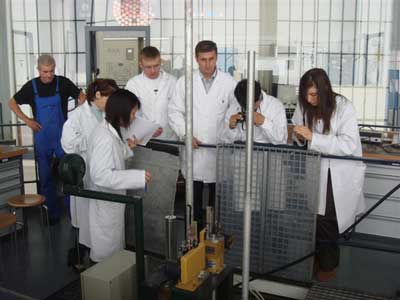
Figure 1 depicts an increasing trend in favour of nuclear education at ATI [5]. The obvious reason for this trend is the awareness level of the public in general - and of students in particular - of the potential that exists for the safe future use of nuclear energy. This has also been influenced by the growing public discussions about climate change and the use of fossil fuels.
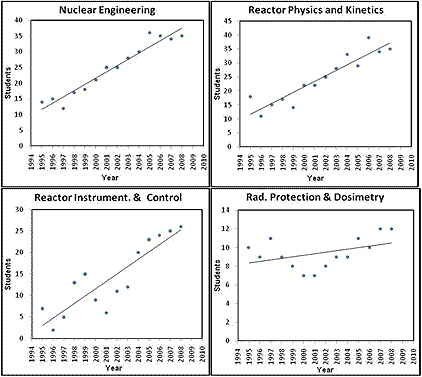
Figure 1: The increasing trend for nuclear education in Austria [5].
2. Nuclear E&T activities at EU-level
Most EU countries are experiencing a serious short-fall in the number of qualified nuclear personnel. There are now fewer nuclear education programmes offered at universities than ever before. Facilities and faculties offering nuclear E&T are ageing and the number of nuclear programmes on offer is declining. The number of nuclear-related degrees has also generally decreased and overall student perceptions of studying nuclear have been adversely affected by these “educational circumstances.” With an unclear vision of the future many young students now believe that job prospects are poor and that there is little interesting nuclear research going on. Low enrolment levels directly affect budgets, and budgetary cuts then limit the facilities available for nuclear programmes [7].
As an active promoter of nuclear education Europe has taken a wide range of measures. These include the development of nuclear educational programmes at universities/research institutes, enhanced exchange programmes for students and professors, and improving public information about nuclear at a European level. The establishment of ENEN is a major step forward for the promotion of nuclear E&T in the region [4]. Its main objective is the preservation and further development of nuclear expertise thanks to higher education and training. ENEN has designed a new qualification called the European Master of Science in Nuclear Engineering certificate (EMSNE) [4]. Education and training courses have been developed and delivered, within a European educational exchange system, to enhance the core curricula and increase the availability of optional fields of study.
Austria, as a member of the OECD, is actively contributing to nuclear education and training activities in Europe. The ATI is an energetic member of ENEN. By offering its nuclear E&T services ATI contributes to ENEN activities aimed at preserving, enhancing and managing nuclear knowledge. The ATI TRIGA research reactor, with its pulsing capabilities, is used as a university-level E&T tool. It offers a wide variety of practical exercises that no other European research reactor is currently carrying out on a regular basis. Here are some of the typical courses offered by ATI.
2.1 Eugene Wigner Course [5]
One of the first international training courses offered was the Eugene Wigner Course, which was established in 2005 as a multinational training course. For about 3 weeks, around 10 - 18 students were trained at the TRIGA reactor in Vienna, the training reactor at Budapest’s Technical University, and at the Vrabec reactor at Prague’s Technical University. Although these courses were very successful they were abandoned in 2008 due to financial problems.
2.2 NTEC course [5]
In 2007, ATI signed a contract with the Nuclear Technology Education Consortium (NTEC) (www.ntec.ac.uk to deliver two one-week courses per year for six NTEC students. The course consists of 15 experimental exercises and the participating students receive credits from the University of Manchester.
2.3 MTR+I3 project
The ATI also plays a role in the Integrated Infrastructure Initiative for Material Testing Reactor MTR+I3. This is an EU project under the European FP6 project. The key goal of MTR+I3 is to build a lasting cooperation between Material Testing Reactor (MTR) operators and relevant laboratories that can maintain European leadership with updated capabilities and competences regarding reactor performances and irradiation technology.
Within the network of MTR+I3 project ATI is an important partner, providing its nuclear E&T services for the benefit of the project. The TRIGA Mark II research reactor, with its 250 MW pulsing capability, offers a well-established course in reactor physics and instrumentation and control.
2.4 MOL courses
In 2009, another contract was signed, this time with the Belgian National Research Centre (SCK-CEN), to deliver seven one-week courses for about 40 reactor staff, in Mol (Belgium). They are offered as part of a commitment to regular retraining required by the Belgian Regulatory Authority. The practical exercises were chosen from a total of 20 exercises.
2.5 Slovak NPP courses
Another example of the support provided to EU countries is the training, since 2002, of operational staff at Bohunice NPP and Mochovce NPP. This regular training course is run by the ATI in co-operation with the Bratislava Technical University, in Slovakia.
3. E&T activities at International level
Due to its close location to the IAEA headquarters, ATI has been offering nuclear E&T services to IAEA Member States (MS) for many years. Consequently, ATI has long-term experience in organising national and international training courses under the IAEA Technical Cooperation projects.
3.1 East European Research Reactor Initiative (EERRI) [8]
Most IAEA MS are facing potential demand for the recruitment of nuclear engineers and scientists. In other words, the development of nuclear technology requires and fosters human resource development (HRD). A continuous, consistent and well-managed HRD programme is crucial for each MS, in order to: 1). Assure continuity over time in providing the required capacities, skills and knowledge and 2). Establish and maintain a manpower pool that is trained in a variety of different nuclear-related areas and has been educated in nuclear-related fields.
An increasing number of MS request IAEA assistance to develop nuclear skills and resources in support of their developing national nuclear power programmes. Some of these MS are planning to construct a research reactor as a first step in the development of nuclear competence and infrastructure. For countries with little nuclear infrastructure, human resources and skills need to be developed to support planning, analysis, evaluation and other prerequisite activities involved in the related decision-making process and in subsequent projects. The Eastern European Research Reactor Initiative (EERRI) was approached by the IAEA to organise and implement a Group Fellowship Training Programme on Research Reactors (GFTPRR). Its purpose is to satisfy the increasing demand for the development of the aforementioned skills. The GFTPRR is offered to interested participants in the MS. The programme is organised in collaboration with the Vienna University of Technology/Atominstitute (VUT/ATI).
The first programme involves VUT/ATI, two Hungarian nuclear research institutes, and some staff members from the Jozef Stefan Institute (JSI), in Ljubljana, Slovenia. The training programme lasts for 6 weeks and covers about 30 topics, ranging from theoretical lectures to practical experiments with the TRIGA reactor Vienna and with the training reactor of Budapest Technical University. Training is provided in three main areas: organisational matters, research reactor operation & maintenance and radiation protection. Currently, the following institutes are involved in this project:
-
Vienna University of Technology/Atominstitute (VUT/ATI), Austria
-
KFKI Budapest, Hungary
-
Budapest University of Technology, Hungary
-
Jozef Stefan Institute, Ljubljana, Slovenia
-
Technical University of Prague, Czech Republic
-
Rez Research Centre, Czech Republic
The first course was completed, with great success, during six weeks in spring 2009. Demand to take part in the course was so high that since that initial course four more similarly structured courses have been offered with IAEA financial support.
Generally, the EERRI course starts at the IAEA Vienna and is followed by 3 weeks at the ATI along with guest lecturers from IJS. Then the trainees go to Budapest for 2.5 weeks of training and the course ends up with a few days spent at the IAEA for a course wrap-up. Follow-up courses offered vary slightly with regards to the time schedule, but the content remains the same.
3.2 IAEA Safeguard Trainee Courses
Since 1984, ATI has provided training courses for the IAEA Safeguards Traineeship Scheme. Participants are selected by the IAEA from developing countries. These courses last for about 4 weeks and trainees undergo very intense theoretical and practical training. About 90 trainees from all over the world have completed ATI safeguard training courses since 1984.
3.3 IAEA fellowship programme
Since the mid-1970s, ATI has been hosting IAEA fellows from all over the world to spend between two weeks and one year doing specialised training. The fellow is attached, according to his/her field of training, to a sepcific ATI working group. After an appropriate introductory period the trainee carries out his/her assigned task. More than 210 fellows have completed this ATI training course to date. In addition, long-term cooperation between the ATI and the fellow’s home institute has been established.
3.4 IAEA expert missions
Experienced ATI staff members carry out IAEA expert missions at the request of IAEA MS. The mission covers a large range of expertise from radio-nuclide application to research reactor start-up and technical inspections. Since the late 1960s more than 200 expert missions have been performed by ATI staff members for African, Asian, Latin and South American countries.
4. Conclusions
Nuclear E&T is essential for the development and maintenance of continuous nuclear development and for contributing to the sustainable provision of human resources. It has been shown that the ATI conducts a wide range of nuclear E&T activities that contribute to international efforts aimed at addressing the concerns about the future of nuclear education. Here are some suggestions for improving nuclear E&T activities:
Experimental facility: The ATI reactor may have to return a few highly-enriched FLIP fuel elements to USA in the next decade, due to the USA’s “Spent Fuel Return Programme” policy. This return may put the future operation of this research reactor at risk, as there is presently no alternative to the fuel back-end. To keep this reactor in operation for research and E&T purposes, either the fuel return programme has to be extended or another solution for the TRIGA fuel back-end has to be found. Furthermore, future TRIGA fuel supply is not guaranteed as the producer has announced a potential end to TRIGA fuel production by end of 2011.
-
Scope of the course: Nuclear E&T programmes should be part of overall national E&T programmes and should be offered in every country and at various levels. The scope of the nuclear E&T programme is directly related to the national nuclear policy. Evidently, it would attract more students if there were a firm government commitment to consistent nuclear development.
-
Curricula: The curriculum of any academic programme is based on its quality. Nuclear E&T has to follow a firm quality assurance programme similar to that applicable to any product that plays an important role in industrial success. To maintain and further improve the quality of the product (or nuclear E&T), every industry (or educational institute, in this case) has to establish a quality management system. The most important factor in the quality of nuclear E&T is consolidated and standardised curricula for all academic programmes. To take up the challenge of offering top quality nuclear education, based on new, attractive and relevant curricula, higher education institutions should cooperate with industry, regulatory bodies and research centres. And more appropriate funding from public and private sectors must be made available.
-
Academic background of the candidates: Having candidates from a similar background taking part in a particular course generally results in its success. In the case of different backgrounds, common course contents should be designed taking into account the candidates’ different backgrounds. It is recommended for the candidates to have a good knowledge of basic nuclear physics and applied mathematics.
-
Prerequisites for participants (eligible criteria for attending courses): It is difficult for students to join a training institute directly if they don’t have a degree. A degree provides the student with the basic knowledge of general subjects ( such as physics, mathematics and computer science etc.) that he/she needs. These subjects are prerequisites for doing the training. The educational institution, broadly-speaking, provides input to training institutions for certain specific subjects.
-
Course material: The course material (PPTs, CDs, notes) should be provided in advance so that students can prepare themselves for their course. This increases the student’s curiosity and, as a result, facilitates his/her retention power.
-
Harmonisation/integration: The integration of EU E&T is ongoing. A certain inefficiency of activities related to E&T in nuclear science area can be attributed to a lack of European integration and harmonisation of education and training activities. Thanks to a nuclear E&T programme the acceleration of the harmonisation process of European E&T would improve, in a more efficient and effective way, vital knowledge transfer.
-
Educational methodologies: New methods using the latest information and communications technology and the most appropriate software tools for nuclear E&T should be applied. These include virtual and e-learning, which apply the latest techniques in order to spread E&T activities worldwide.
Reference
-
R. Khan, H. Böck, Status and Patterns of European Nuclear Education and its Best Practices (ENS NEWS, Issue No. 23 winter, Feb. 2009).
-
Ph. Beeley et al., Nuclear Education, Training and Knowledge Management in Europe (ENS NEWS, issue no. 27 winter, 2010, www.euronuclear.org/e-news/e-news-27/hsc-statement.htm.
-
IAEA Technical Meeting on the Role of Universities in Preserving and Managing Nuclear Knowledge, 10-14 December 2007, IAEA HQ., Vienna, Austria.
-
European Nuclear Education Network (ENEN), www.enen-assoc.org/.
-
R. Khan, H. Böck, M. Villa, The Status and Patterns of Nuclear Education in Anti-nuclear Environment (International Journal of Nuclear Knowledge Management (IJNKM), Vol. 4, number. 3, 2010)).
-
H. Böck, R. Khan, Typical Experiments with Low Power Research Reactor, Vienna University of Technology/Atominstitute, ATIR 1008, Nov. 2010.
-
OECD publication, Nuclear Education and Training: Cause for Concern? (OECD/NEA, ISBN 92-64-18521-6. 2000).
-
H. Böck, et al., A multinational practical training course for nuclear candidate countries organized by EERRI, International Conference on Research Reactor Fuel Management, 22-25 March, 2009, IAEA, Vienna, Austria.
|

